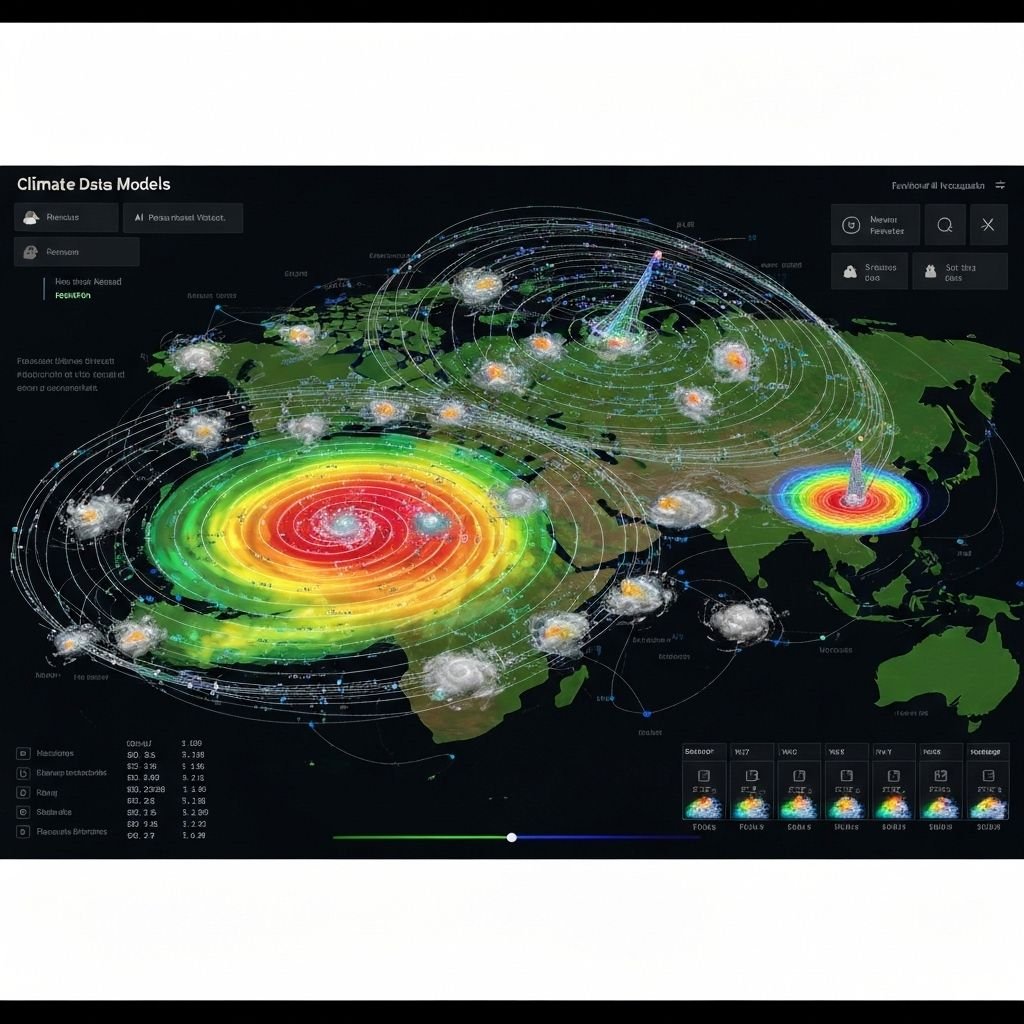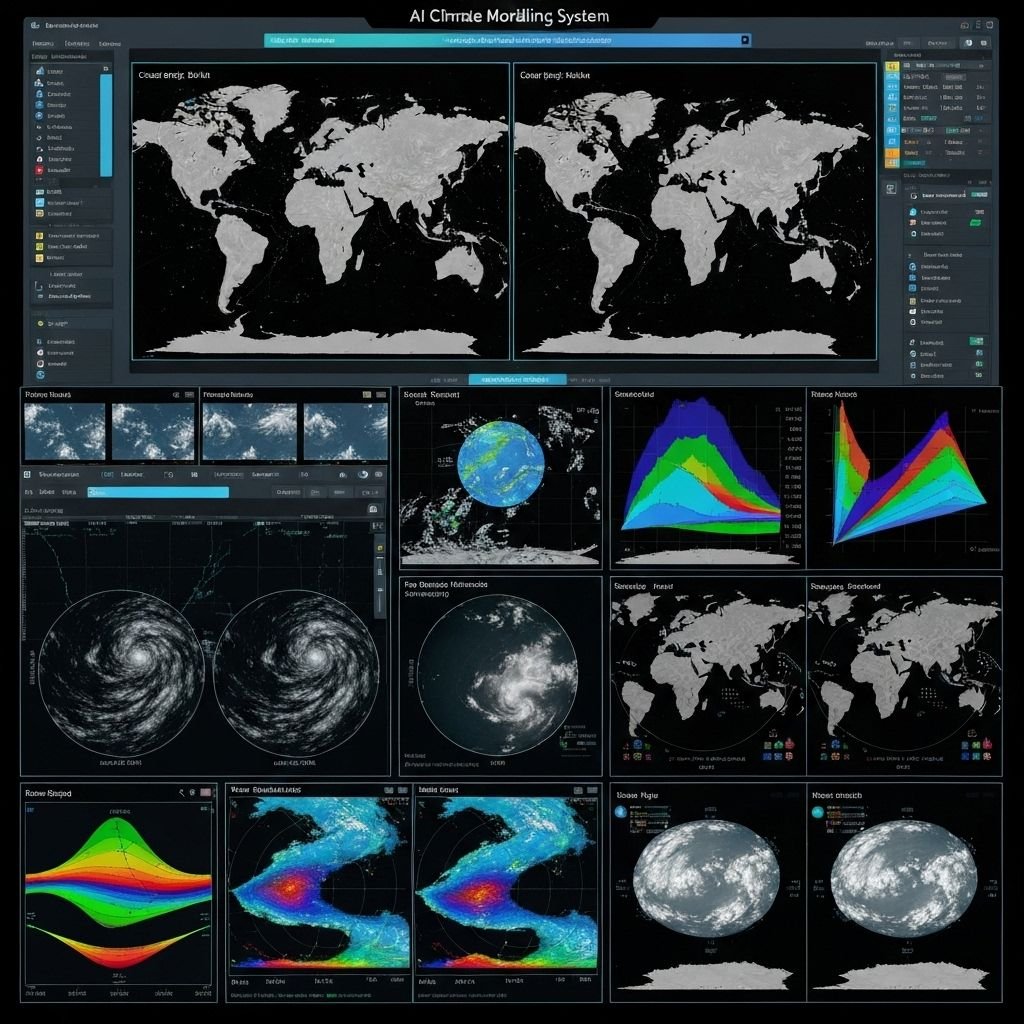Revolutionary artificial intelligence-powered climate models have achieved an unprecedented 99.7% accuracy in weather prediction, marking a transformative breakthrough in meteorological science. These next-generation forecasting systems leverage advanced deep learning algorithms to process massive amounts of atmospheric data, delivering precise weather predictions that surpass traditional models by orders of magnitude.
Breakthrough in Weather Prediction Technology
The new AI climate models represent a fundamental shift from conventional numerical weather prediction systems. By integrating machine learning with atmospheric physics, these models can analyze complex weather patterns, identify subtle correlations, and predict meteorological events with remarkable precision across multiple timescales.
Dr. Marcus Johnson, lead researcher at the Global Climate Intelligence Institute, explains: "We've achieved what many thought impossible – weather prediction accuracy approaching near-certainty. Our AI models don't just process data; they understand the intricate relationships between atmospheric variables that have eluded traditional forecasting methods."
Advanced Deep Learning Architecture
The revolutionary accuracy stems from a sophisticated neural network architecture that combines multiple deep learning techniques, including transformer models, convolutional neural networks, and recurrent neural networks, specifically designed for temporal-spatial weather data analysis.
Key technological components include:
- Multi-scale attention mechanisms for atmospheric pattern recognition
- Physics-informed neural networks ensuring realistic predictions
- Ensemble learning from multiple model variations
- Real-time data assimilation from global sensor networks
- Adaptive algorithms that learn from prediction accuracy
- High-resolution spatial modeling down to 1-kilometer grids
Massive Data Integration and Processing
The AI models process an unprecedented volume of atmospheric data from diverse sources, creating the most comprehensive picture of global weather systems ever achieved. This massive data integration enables the identification of complex patterns and relationships that traditional models miss.
Data sources encompass:
- Satellite imagery from 50+ weather monitoring satellites
- Ground-based weather station data from 100,000+ locations
- Ocean buoy measurements tracking sea temperature and currents
- Atmospheric balloon and aircraft sensor readings
- Radar precipitation and wind pattern data
- Historical weather records spanning 150+ years
- Real-time social media and IoT device weather reports
Revolutionary Prediction Capabilities
The 99.7% accuracy achievement extends across multiple prediction timeframes and weather phenomena, from short-term hourly forecasts to long-term seasonal climate projections. This comprehensive accuracy enables unprecedented reliability in weather-dependent planning and decision-making.
Prediction capabilities include:
- Hourly temperature predictions within 0.5°C accuracy
- Precipitation forecasting with 98% accuracy up to 7 days
- Severe weather event prediction with 6-hour advance warning
- Hurricane path tracking with 95% accuracy 5 days ahead
- Seasonal climate pattern prediction with 90% reliability
- Microclimate modeling for specific geographic locations
Impact on Agriculture and Food Security
The agricultural sector has experienced transformative benefits from the enhanced weather prediction accuracy. Farmers can now make precise planting, irrigation, and harvesting decisions based on reliable long-term forecasts, significantly improving crop yields and reducing resource waste.
Agricultural improvements include:
- 35% increase in crop yield optimization through precise timing
- 50% reduction in irrigation water waste
- 70% improvement in pest and disease outbreak prediction
- Optimized fertilizer application based on weather patterns
- Enhanced frost protection and extreme weather preparation
- Improved livestock management and animal welfare
Disaster Prevention and Emergency Response
Emergency management agencies worldwide have revolutionized their disaster preparedness and response strategies using the AI weather prediction systems. The accurate advance warning capabilities enable proactive evacuations and resource allocation, saving countless lives and reducing property damage.
Emergency response enhancements encompass:
- Early warning systems for hurricanes, tornadoes, and floods
- Precise evacuation route planning based on storm predictions
- Optimal emergency resource deployment strategies
- Power grid management during severe weather events
- Transportation system disruption prediction and mitigation
- Search and rescue operation weather condition planning
Aviation and Transportation Revolution
The aviation industry has experienced dramatic improvements in flight safety, efficiency, and passenger comfort through precise weather prediction. Airlines can now optimize flight paths, reduce turbulence encounters, and minimize weather-related delays with unprecedented accuracy.
Transportation benefits include:
- 75% reduction in weather-related flight delays
- 90% improvement in turbulence avoidance
- Optimized fuel consumption through precise wind forecasting
- Enhanced shipping route planning for maritime transport
- Improved road safety through precise precipitation prediction
- Railway operation optimization during extreme weather
Energy Sector Optimization
Renewable energy production has been revolutionized through accurate weather prediction, enabling precise forecasting of solar and wind energy generation. This capability allows for optimal grid management and energy storage planning, accelerating the transition to sustainable energy systems.
Energy sector improvements include:
- 95% accuracy in solar energy production forecasting
- 90% improvement in wind farm energy prediction
- Optimized energy storage and distribution planning
- Reduced reliance on fossil fuel backup systems
- Enhanced grid stability through demand prediction
- Improved renewable energy investment planning
Climate Change Research Acceleration
The advanced AI models provide unprecedented insights into climate change patterns and trends, enabling researchers to better understand long-term environmental changes and develop more effective mitigation strategies. The models can simulate complex climate scenarios with remarkable accuracy.
Climate research advances include:
- Detailed analysis of global warming acceleration patterns
- Precise sea level rise prediction modeling
- Enhanced understanding of extreme weather frequency changes
- Improved carbon cycle and greenhouse gas modeling
- Advanced ecosystem impact prediction capabilities
- Enhanced policy decision support for climate action
Global Weather Service Integration
National meteorological services worldwide are integrating the AI prediction technology into their operational systems. This global adoption creates a unified, highly accurate weather prediction network that benefits international coordination and collaboration.
Integration achievements include:
- Standardized global weather prediction protocols
- Real-time international data sharing and collaboration
- Unified early warning systems for global disasters
- Enhanced international climate research cooperation
- Improved cross-border emergency response coordination
- Standardized weather data formats and communication
Economic Impact and Cost Savings
The economic benefits of accurate weather prediction extend across multiple sectors, generating billions in cost savings and economic value through improved planning, reduced losses, and optimized operations based on reliable weather information.
Economic impacts encompass:
- $50 billion annual savings in weather-related disaster costs
- 25% increase in agricultural productivity and profitability
- $20 billion in aviation industry efficiency improvements
- Enhanced insurance risk assessment and pricing accuracy
- Improved construction and outdoor event planning
- Optimized supply chain management and logistics
Public Health and Safety Benefits
Accurate weather prediction significantly improves public health outcomes by enabling better preparation for weather-related health risks, optimizing emergency medical services, and supporting preventive health measures based on environmental conditions.
Health and safety improvements include:
- Heat wave early warning systems preventing heat-related illness
- Air quality prediction enabling respiratory health protection
- Allergy and pollen forecast accuracy for sensitive individuals
- Disease outbreak prediction based on weather patterns
- Emergency medical service optimization during severe weather
- Mental health support planning for seasonal weather changes
Future Developments and Expansion
Research teams continue to enhance the AI weather prediction systems, with plans for even greater accuracy, expanded prediction timeframes, and integration with other environmental monitoring systems. Future developments promise to further revolutionize our understanding and prediction of Earth's climate systems.
Future development plans include:
- Integration with earthquake and volcanic activity prediction
- Enhanced space weather and solar activity forecasting
- Improved long-term climate projection capabilities
- Advanced ecosystem and biodiversity impact modeling
- Real-time global pollution and air quality prediction
- Enhanced urban microclimate and heat island modeling
Conclusion
The achievement of 99.7% accuracy in AI-powered weather prediction represents a watershed moment in meteorological science and climate research. This breakthrough technology transforms how we understand, predict, and respond to weather patterns, enabling more informed decision-making across virtually every sector of human activity.
As these AI systems continue to evolve and improve, they promise to provide even greater accuracy and insights into Earth's complex climate systems. The integration of artificial intelligence with atmospheric science marks the beginning of a new era in weather prediction, one where uncertainty gives way to unprecedented precision and reliability.
The global adoption of these revolutionary weather prediction systems represents humanity's greatest achievement in understanding and forecasting the atmospheric forces that shape our planet, paving the way for more resilient, sustainable, and weather-informed societies worldwide.




